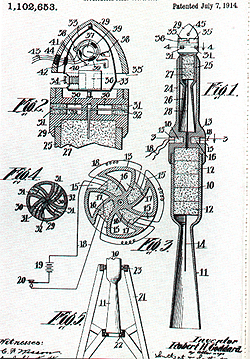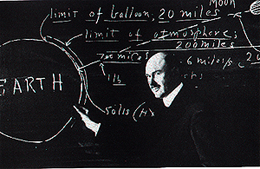|
America’s Prodigy Unappreciated ...........The initial interests of the United States government in the infantine science of liquid fuel rocketry came during WWI, answered by another visionary yet reclusive scientist. But it would not be until years later that these devices were to be considered as formidable and potentially powerful allies to the interests of America. If Konstantin Tsiolkovsky was the father of cosmonautics, then the American Robert Hutchings Goddard fathered astronautics. Goddard, a solitary and scholarly man, was likewise inspired by the flights of fancy of science fiction authors, namely "The War of the Worlds," a classic story of a Martian invasion by H.G. Wells. His products however, were far different than those of Tsiolkovsky. Goddard was both a talented physicist and a capable engineer. Without knowledge of the Russians theoretical works, Goddard produced similarly noteworthy ideas, also based on liquid fuel rockets. The primary difference between these two men was that while the former sketched and wrote manuscripts, the latter constructed and launched actual rockets.(Walter, 23) |
|

